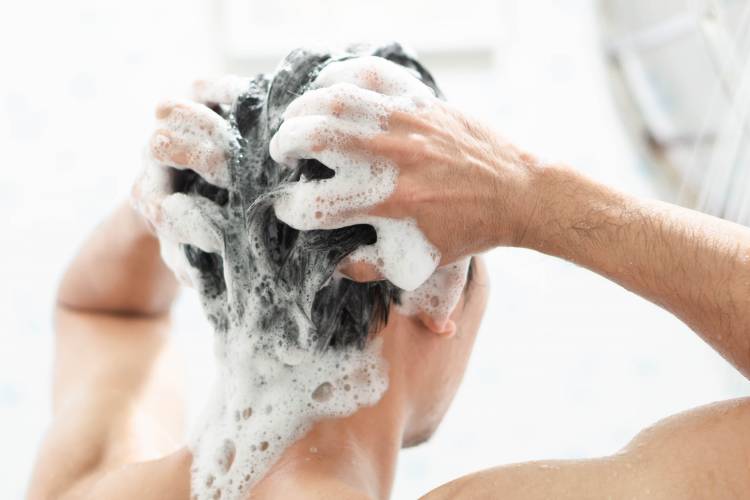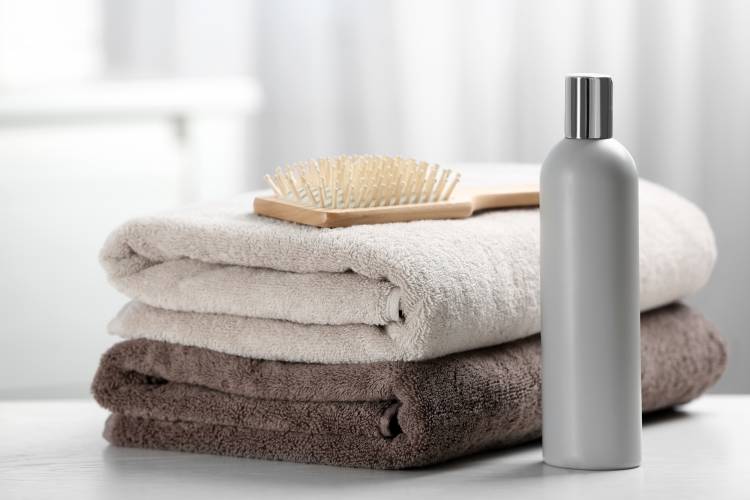Types of shampoo
Oily, dry, straight, curly, frizzy hair ... There are as many hair types as there are shampoos! Discover the different types of shampoos that exist with us.
TRIED AND TESTED
Share

Types of shampoo: discover which is the best for you
Nowadays there are as many types of hair as there are people in the world. All of them, with different problems or needs, but also with different solutions. And the thing is that now, everything is invented and it doesn't matter if your hair is dyed, curly, straight, fine, oily, dry, frizzy… There is a shampoo with the perfect formulation for you!
There are no more excuses not to take care of your hair health and show off a perfect mane all year long. Do you want to discover what types of shampoo exist and which is the most suitable for your needs? Take note, because we will tell you about it below.
Types of shampoo according to the shape of your hair
The shape of the hair determines which products to use. And, although at first glance you can see the main difference between straight hair and curly hair, there are more differences between them. Straight hair tends to be less thick, finer and, among other things, tends to break and get greasy more easily. In curly hair the opposite happens: it is usually drier and needs more care so that the curls are loose, hydrated and beautiful.
Although different circumstances can occur in the same type of hair, today there are shampoos that respond to the common characteristics that both groups comprise.
- Shampoo for straight hair: this type of hair is generally finer so search for a shampoo that provides volume and texture but does not cake.
- Curly hair shampoo: this type of hair absorbs much more moisture and is very porous, so you are looking for a highly hydrating shampoo, normally composed of different types of oils, so that the curls are hydrated, loose and defined.

Types of shampoo for special needs
All hair faces different types of needs, but many of them have special characteristics that must be treated appropriately, starting with washing.
- Greasy hair: greasy hair is one that produces excess sebum and tends to look shiny shortly after washing, especially in the root zone. This type of hair needs an oily hair shampoo containing ingredients capable of restoring the scalp by balancing the production of sebum, but preserving its shiny appearance.
- Dry or dehydrated hair: although curly hair is usually the driest, there are also straight hair that need extra hydration. Dry hair tends to have split ends, feels rough to the touch, and suffers from frizz. This type of hair needs to look for a moisturizing shampoo, composed of ingredients that soften its texture and give it a shiny and silky appearance.
- Dyed hair: coloured hair loses colour and shine with each wash, so colour protection products are very important because they prevent the hair cuticle from opening so wide and losing too much colour. This type of hair needs to look for a colour protection shampoo, without sulphates or silicones, since these drag the pigments of the hair and, in addition, they can get to dry it excessively. It should be noted that hair dyed blonde is that which suffers the most from hair oxidation and is the most dry. Besides, the blonde colour is very difficult to maintain, since with each wash its colour oxidizes and it can turn orange, yellow or even green when it comes into contact with various substances such as chlorine. This is why that platinum blonde or white hair needs a silver or violet shampoo that gradually tints its colour.
- Dandruff hair: dandruff is the peeling of the dermis of the scalp and appears due to the abnormal proliferation of a microorganism that is naturally present on our skin. This flakes off (dry dandruff) or sticks (oily dandruff) to the scalp, forming unsightly white flakes. To treat this condition, the main thing is to opt for a purifying shampoo with ingredients, such as mint, that help eliminate the appearance of this fungus.
- For hair loss: Every day we all lose between 50 and 100 hairs, but sometimes hair loss is greater due to external factors such as poor health, stress, the seasonal changes, hormonal imbalances, etc. In this case it is convenient to use a type of hair loss shampoo that deeply cleanses the hair and helps to strengthen the hair follicle.
New shampoo formats
As in fashion, everything comes back better, and many of the shampoo formats that our mothers or grandmothers used to use are here to stay.
- Dry shampoo: Has it ever happened to you that you washed your hair the night before and woken up with greasy roots? If this happens to you, this type of shampoo will be your best friend. With dry shampoo you don't need water to give your hair a fresh, clean and voluminous look. And this spray shampoo is applied to the roots of the hair and absorbs the excess fat or sebum that they have produced: after a few minutes of its application, the roots are rubbed to remove the remains and… voila! This shampoo replaces talcum powder or rice flour that were used in the past to perform the same function.
- Bar shampoo: this type of shampoo, which emulates old soaps, has emerged in recent years as a more environmentally friendly option, since the solid shampoo does not need a plastic container to be stored or transported. A perfect option not only for those most committed to the environment, but also for the most travellers, so that they can enjoy their favourite shampoo from anywhere in the world.






